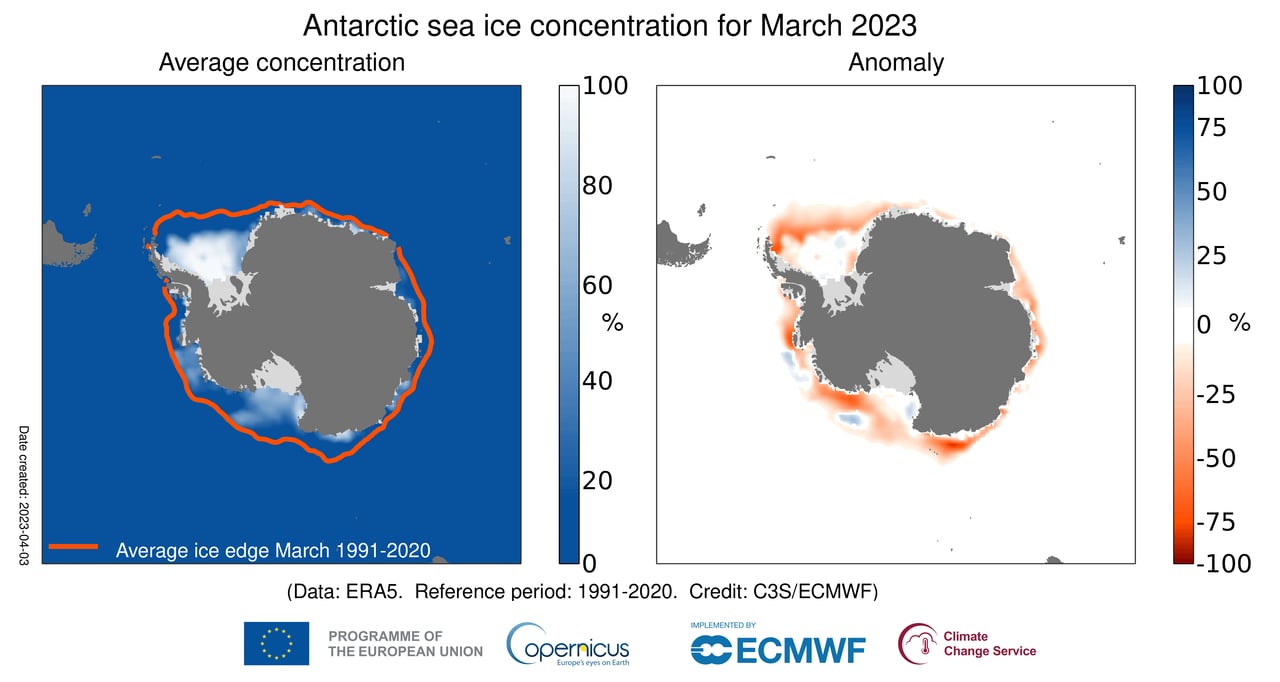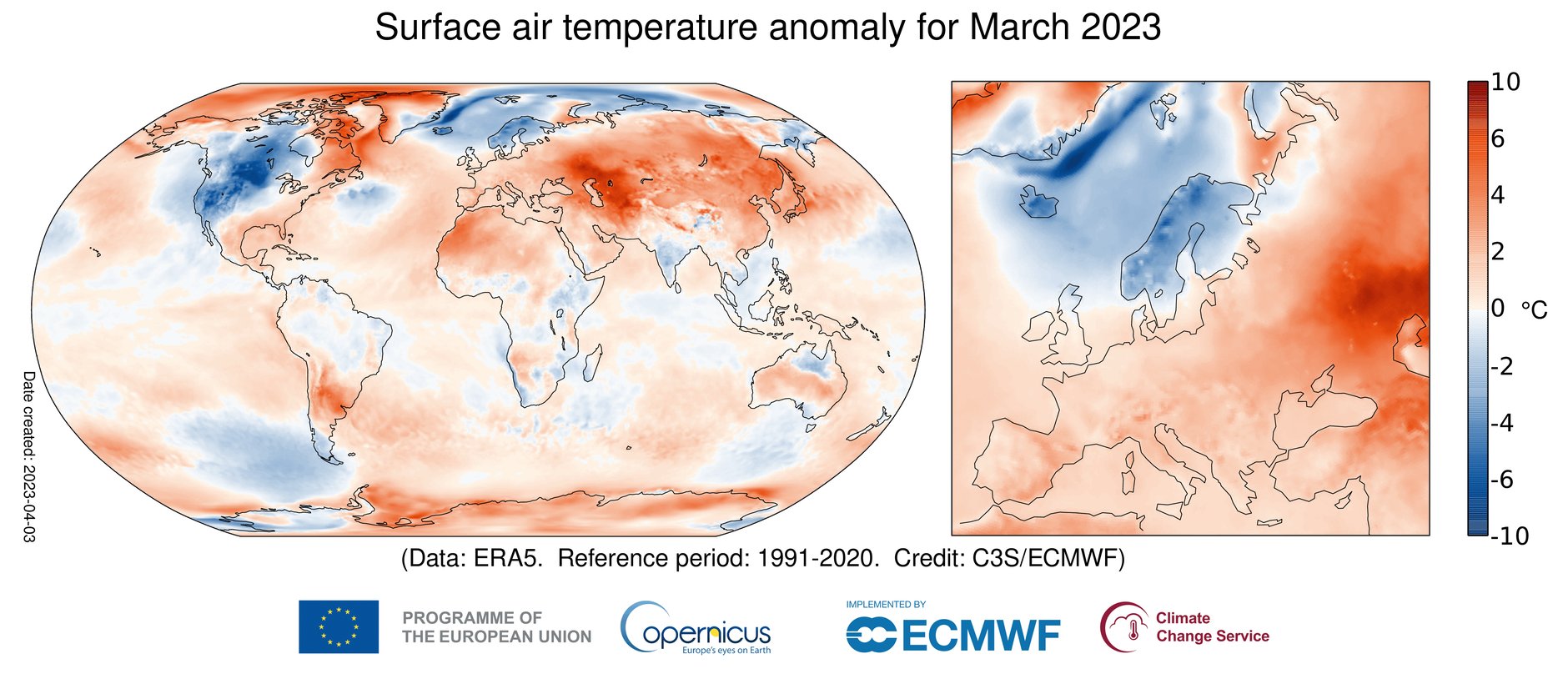(CN) — The world saw its second-warmest March on record and the Antarctic sea ice covered the second-smallest extent ever measured, the European Union's climate change service reported Thursday.
For many people in North America, last month was bitterly cold with major snowstorms hitting large swaths of the United States. The Northeast and California saw massive amounts of snow during March.
But for many other parts of the world, March was unusually warm, according to the EU's Copernicus Climate Change Service.
The agency bases its findings on computer-generated analyses based on billions of readings from satellites, ships, aircraft and weather stations around the world. To make comparisons, it uses a data range from 1991 to 2020.
“The month was jointly the second warmest March globally,” the agency said on Thursday.
It said it was much warmer than average over much of North Africa, southwestern Russia and most of Asia. Many new high temperatures for March were measured in Asia, it noted. Argentina and other parts of South America, Australia and northeastern North America also saw warmer-than-average temperatures.
In Europe, the picture was split with northern Europe experiencing a colder than usual March while southern and central Europe saw a warmer than average month.

In the Antarctic region, one of the fastest warming areas on the planet, scientists are deeply concerned about the shrinking area of sea ice and the new data from Copernicus provided new evidence for those alarms.
Copernicus said the sea ice extent this year was the lowest on record for the month of February and the second lowest for the month of March. This March the area of sea ice was 28% below the average of 1.7 million square miles, it said.
Meanwhile, the Arctic sea ice extent was 4% below average while the Greenland Sea saw much more sea ice cover than average, Copernicus said.
Courthouse News reporter Cain Burdeau is based in the European Union.
Subscribe to Closing Arguments
Sign up for new weekly newsletter Closing Arguments to get the latest about ongoing trials, major litigation and hot cases and rulings in courthouses around the U.S. and the world.









